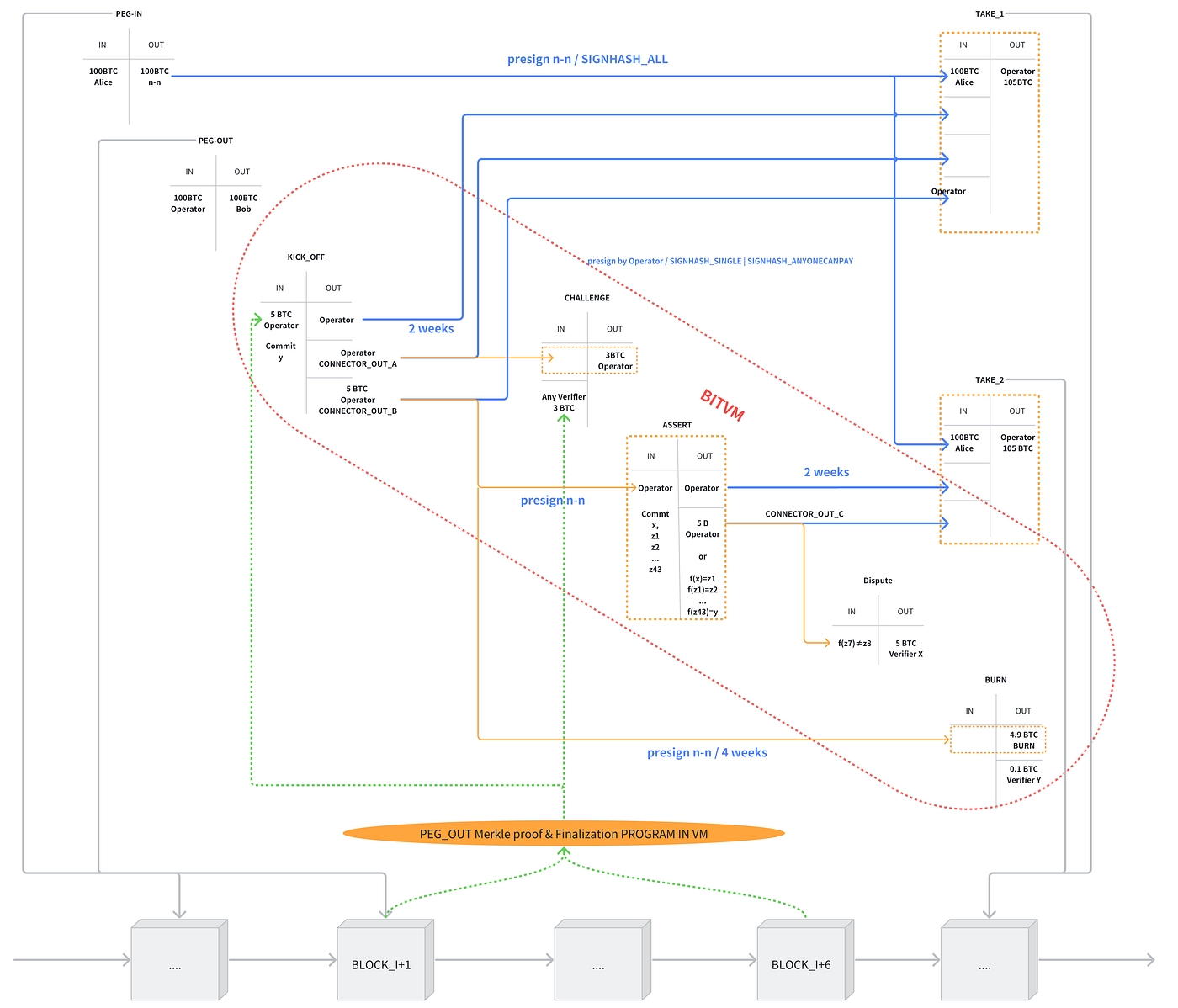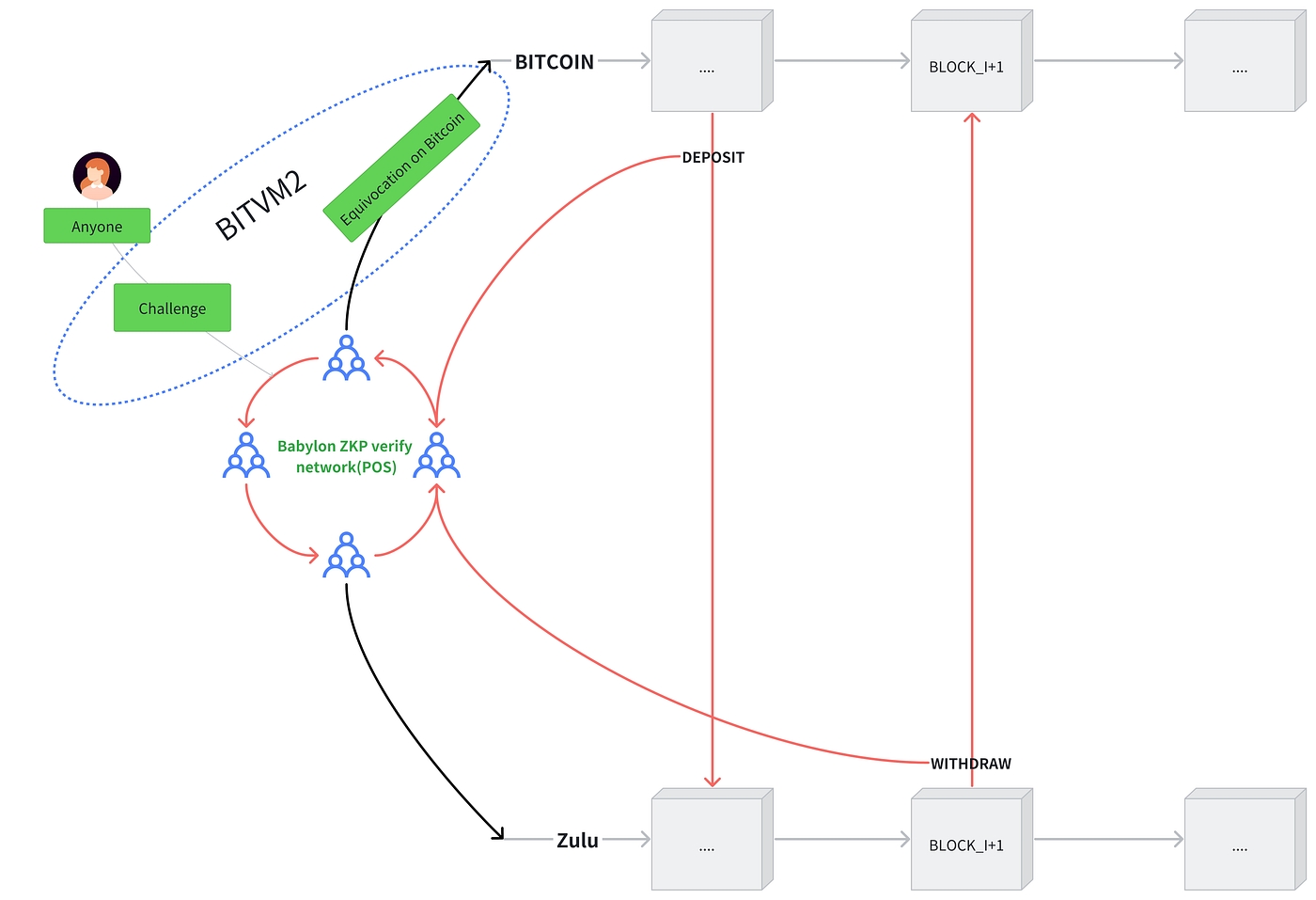Zulu Trust-Minimized Bridge
We are excited to share our development of the Zulu Bridge. A trust-minimized decentralized peg in / peg out bridge implementation of BitVM.
This is a very important milestone for Zulu Network. Here are all the details of our BitVM-Zulu implementation, with an overview of the technology and more in-depth diagrams and technical details.
We are very excited to share our design concept of a Trust-minimized decentralized bridge based on BitVM!
Issuing BTC on ZULU
A two-way peg solution for liquidity providers.

Similar to how WBTC is issued on Ethereum, we aim to issue BTC on Zulu. However, since WBTC is centralized, Zulu is developing a trust-minimized method to issue BTC on its platform. This is aimed at liquidity providers that peg larger amounts of BTC to cater for atomic swaps for regular users.
BitVM-based bridge for general users

A two-way peg bridge is not suitable for general users due to it only supporting fixed amounts and generally more suitable for larger amounts of Bitcoin. However, we can improve this by developing a trust-minimized method (though not entirely trustless, as Bitcoin cannot verify ZKPs directly).
There are two key reasons why our approach is secure:
We leverage Bitcoin’s economic security through Babylon.
We benefit from Bitcoin’s network security by supporting the BitVM2 design. Anyone can challenge the PoS network and report any equivocation on the Bitcoin network if malicious activity occurs.
What is the current status of it? What are the next key milestones and estimated timing?
BitVM2 plays a crucial role. We have successfully implemented support for Groth16 on Bitcoin using the Bitcoin scripting language to execute the Groth16 verification process. Groth16 is a commonly used SNARK algorithm in the ZK industry and it’s used by many prominient teams. Zulu is the only team that has achieved this so far to our knowledge. Additionally, the Zulu team has contributed core code to the BitVM repository.
With ZKPs now verified on Bitcoin, there is still more work to be done. Our next milestone is to build a trust-minimized bridge for general users.
What is currently in the demo? What are we seeing? What’s the format? Is it a video? Is it code repository?
For now, you can now check our progress by reviewing our public repository and see our contributions to the industry in the open-sourced BitVM repository.
1. Fflonk verifier script code: https://github.com/BitVM/BitVM/pull/69
2. Groth16 verifier script code: https://github.com/zulu-network/BitVM
3. Groth16 verifier rust code: https://github.com/zulu-network/bitvm-groth16-verifier
In short- why are we able to do it when other teams haven’t been able to yet?
Many teams claim they are building their bridge based on Bitcoin, but some still have misconceptions about it. We’ve seen some teams looking at BitVM as the holy grail solving all problems, but in reality, it is far from perfect, BitVM is very challenging to develop; it requires in-depth knowledge of both the Bitcoin network and Zero Knowledge concepts and algorithms and the core BitVM design itself does not provide a good solution or experience for regular users. Hence, providing a trust minimized bridge utilizing BitVM for larger sums of BTC provided by liquidity providers together with an atomic swap design secured by Bitcoins utilizing Babylon gives us the best of both worlds, trust minimized bridging of BTC and good user experience.
Ultimately, talking the talk is easy but walking the walk is not. We ask everyone to please check our code.
References
2. https://brink.dev/assets/files/2024-01-16-eng-bitvm-slides.pdf
Last updated